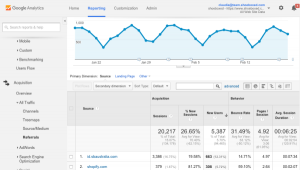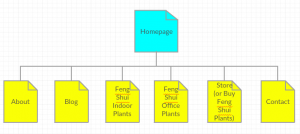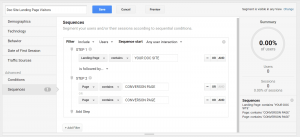We all like to believe we’re special. Or as anthropologist Margaret Mead wryly put it, “Always remember that you are absolutely unique — just like everyone else.”
That belief (or state of denial) is why so-called “batch and blast” email is usually less effective than email campaigns customized to your unique market. In a recent study of marketing professionals by Experian Marketing Services, 62 percent said a personalized email subject line is crucial.
The study also revealed that personalized promotional emails generated transaction rates and revenue per email six times higher than non-personalized emails. The personalized mailings had 29 percent higher unique open rates and 41 percent higher unique click rates. For triggered email campaigns (in which emails are triggered by a calendar event, a business action or an action taken by a website visitor), personalization doubled transaction rates.
Because today’s email marketing services allow for more detailed data about customers, users can implement some pretty impressive personalization that likely wouldn’t have been possible a couple of decades ago. Logistics like fully optimized mobile applications and time-delayed messaging are now par for the course, as is message micro-customization based on consumer behavior.
“With so many available tools, businesses of all sizes can now employ the best email strategies for reaching customers,” writes Jayson DeMers in the Huffington Post. “When used correctly, these tools let businesses of all sizes compete with even the largest corporations. As more marketers discover the value of personalized marketing, businesses that don’t personalize their efforts will likely find their campaigns are largely unsuccessful.”

“To get started with such customization, conducting customer research is imperative,” explains Vertical Response Senior Content Marketing Manager, Linzi Breckenridge. “Your success with email marketing lies in understanding as much as you can about your contacts so you can better communicate with the groups of people likely to find your message relevant,” she says.
Since personalizing messages for a world’s worth of potential customers is probably still out of technology’s reach, here are tips for identifying whom to target in your next campaign.
- Identify your target market(s), segmenting the groups of customers most likely to buy your goods and services. Think about which segment of the population has a problem your product is able to solve. Narrowing that down keeps you from wasting time and energy, and maximizes your chance of gaining and keeping customers, growing profits and expanding market share.
- The most common ways to segment are by demographics, geographic location, purchasing behavior and/or psychographic segmentation (interests, hobbies, lifestyles, values and attitudes). The most common demographics used are age, gender and income level, notes social media blogger Lisa Furgison, all of which can be collected from your customers and embedded for reference onto your website or blog platform.
- To help you form your messages, some marketing professionals recommend identifying common themes among your best customers and conceiving of actual “personas” that represent them in their various forms — including their shopping objectives and possible objections to buying.
- Further fine-tune your target market by analyzing email data to identify customers who answered calls to action, like clicking to open windows announcing new product arrivals. “Knowing if, when and how contacts engage with your email is useful in determining which contacts find the message relevant,” notes Breckenridge. “You can continue the communication with those who respond, and tweak or completely change the message for those who don’t.”
- Limit your target market to a manageable size. Warns Furgison: “If you overdose on segmentation, you could get frustrated and make your email marketing strategy more complicated than it needs to be.”
- Consider rewarding loyal customers with discounts or special sneak peeks of products. “With a marketplace overflowing with options, repeat buyers are a much smaller segment than they once were,” Furgison notes.
- Identify, target, and maybe reward brand advocates — customers who praise your products on social media or provide you positive feedback.
- Make an effort to bring back inactive customers, possibly with a promo. Such emails have titles like “We miss you!” or “It’s been a while,” notes Furgison, who also advises that surveys should find out why customers have strayed.
- Place the customer’s first name or user ID at the top of the message to quickly capture attention, advises Kevin Gao on targetmarketingmag.com. “If the user took the time to register with your business, then there is some implicit trust between both of you,” he says. “Remind them of your relationship by promptly showing their names. This tactic is especially important for consumers on mobile devices as the limited space means brands need logical personalization right away.”
- Ask customers for information so you can provide even more apt customization in the future. “But avoid being greedy,” warns Gao. “Customers don’t want to spend time with a detailed registration page that asks for demographic data or other personal information. Ask for the minimum, use that in personalized emails, and expand your data as the relationship grows.”
- Messages to customers triggered by real-time behaviors — such as reminders that items have been left in a “shopping cart” — can be very effective. “Even if the visitor receives it minutes after leaving the site, it does help the brand to stick in their mind,” states Gao. “Personalization should also be included in standard messages, such as shipment confirmations, where companies can suggest additional products or services, perhaps at a discount.”
- Consider customizing email messages to arrive at the optimal times for your customers depending on demographics and time zone. For example, emails to student customers could arrive in the evenings when they’re most likely to be browsing via computer.
Lastly, always test your email campaign before sending. Having more than one pair of eyes review the email reduces the chance of suffering from an error. After making the effort to boost open and click rates with personalization and segmentation, the last thing you want is to waste it on a typo.
Conclusion: Move beyond the old-fashioned and ineffective approach of “batch and blast” to get the best results with email marketing.
Digital & Social Articles on Business 2 Community(71)
Report Post




